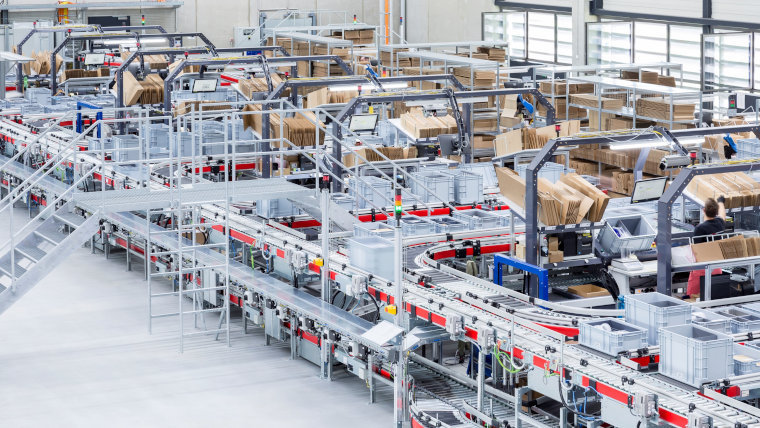Time Series Data
CrateDB is a distributed time series database built to handle high-volume ingestion, real time analytics, and long-term retention without the limitations of traditional time series systems. With a columnar engine optimized for fast aggregations, automatic indexing, and native SQL, CrateDB lets you analyze fresh and historical data with the same ease, no matter how fast your data grows.
Store every event, keep full fidelity across billions of rows, and run analytics, search, and AI workloads together in one scalable engine.
Time series data querying with SQL
Hyper-fast. Results in milliseconds.
/* Based on device data, this query returns the average
* of the battery level for every hour for each device_id
*/
WITH avg_metrics AS (
SELECT device_id,
DATE_BIN('1 hour'::INTERVAL, time, 0) AS period,
AVG(battery_level) AS avg_battery_level
FROM devices.readings
GROUP BY 1, 2
ORDER BY 1, 2
)
SELECT period,
t.device_id,
manufacturer,
avg_battery_level
FROM avg_metrics t, devices.info i
WHERE t.device_id = i.device_id
AND model = 'mustang'
LIMIT 10;
+---------------+------------+--------------+-------------------+
| period | device_id | manufacturer | avg_battery_level |
+---------------+------------+--------------+-------------------+
| 1480802400000 | demo000001 | iobeam | 49.25757575757576 |
| 1480806000000 | demo000001 | iobeam | 47.375 |
| 1480802400000 | demo000007 | iobeam | 25.53030303030303 |
| 1480806000000 | demo000007 | iobeam | 58.5 |
| 1480802400000 | demo000010 | iobeam | 34.90909090909091 |
| 1480806000000 | demo000010 | iobeam | 32.4 |
| 1480802400000 | demo000016 | iobeam | 36.06060606060606 |
| 1480806000000 | demo000016 | iobeam | 35.45 |
| 1480802400000 | demo000025 | iobeam | 12 |
| 1480806000000 | demo000025 | iobeam | 16.475 |
+---------------+------------+--------------+-------------------+
/* To identify gaps on the readings, the following queries generates a series
* and by joining it with the original data, you can spot any gap */
with avg_battery AS (
SELECT battery_level, time
FROM devices.readings
WHERE device_id = 'demo000007'
AND time > 1480118400000
AND time < 1480301200000
ORDER BY 2
),
all_hours AS (
SELECT generate_series(1480118430000,1480301200000,'30 second'::interval) AS generated_hours
)
SELECT time, generated_hours, battery_level
FROM all_hours
LEFT JOIN avg_battery ON generated_hours = time
ORDER BY 2
LIMIT 20;
+---------------+---------------+---------------+
| time | hours | battery_level |
+---------------+---------------+---------------+
| 1480118430000 | 1480118430000 | 67 |
| 1480118460000 | 1480118460000 | 66 |
| 1480118490000 | 1480118490000 | 66 |
| 1480118520000 | 1480118520000 | 66 |
| 1480118550000 | 1480118550000 | 66 |
| 1480118580000 | 1480118580000 | 66 |
| 1480118610000 | 1480118610000 | 65 |
| 1480118640000 | 1480118640000 | NULL |
| 1480118670000 | 1480118670000 | 65 |
| 1480118700000 | 1480118700000 | 65 |
| 1480118730000 | 1480118730000 | 65 |
| 1480118760000 | 1480118760000 | 65 |
| 1480118790000 | 1480118790000 | 65 |
| 1480118820000 | 1480118820000 | 65 |
| 1480118850000 | 1480118850000 | 65 |
| 1480118880000 | 1480118880000 | 65 |
| 1480118910000 | 1480118910000 | 65 |
| 1480118940000 | 1480118940000 | 65 |
| 1480118970000 | 1480118970000 | NULL |
| 1480119000000 | 1480119000000 | NULL |
+---------------+---------------+---------------+
/* Based on device data, this query returns the number of battery charges
* per day for a given device_id */
WITH aux_charging AS (
SELECT time,
DATE_BIN('P1D'::INTERVAL,time,0) AS day,
battery_status,
LAG(battery_status) OVER (PARTITION BY device_id ORDER BY time) AS prev_battery_status
FROM devices.readings
WHERE device_id = 'demo000001'
ORDER BY time
),
count_start_charging AS (
SELECT day, (case when battery_status <> prev_battery_status then 1 else 0 end) AS start_charging
FROM aux_charging
ORDER BY 1
)
SELECT day, sum(start_charging) as charges_number
FROM count_start_charging
GROUP BY 1
ORDER BY 1;
+---------------+---------------+
| count_charges | day |
+---------------+---------------+
| 2 | 1479168000000 |
| 4 | 1479254400000 |
| 2 | 1479340800000 |
| 10 | 1479427200000 |
| 7 | 1479600000000 |
| 8 | 1479686400000 |
| 6 | 1479772800000 |
| 11 | 1479859200000 |
| 5 | 1480032000000 |
| 7 | 1480118400000 |
| 6 | 1480204800000 |
| 10 | 1480291200000 |
| 3 | 1480464000000 |
| 3 | 1480550400000 |
| 7 | 1480636800000 |
| 2 | 1480723200000 |
+---------------+---------------+
/* Based on device data, this query returns the average of the battery temperature
* for each OS version */
SELECT device_info['os_name'], avg(battery_temperature)
FROM "devices"."readings"
GROUP BY 1
LIMIT 100;
+---------+--------------------------+
| os_name | avg(battery_temperature) |
+---------+--------------------------+
| 4.4.4 | 90.85937893039049 |
| 5.1.0 | 90.86754559738132 |
| 6.0.1 | 90.84230101265824 |
| 5.0.0 | 90.8574802739726 |
+---------+--------------------------+
High-performance storage for time series data
CrateDB’s columnar storage format accelerates analytics on time-stamped data, even at multi-year scale. It efficiently handles wide tables with hundreds of columns and delivers fast scans, aggregations, and filtering across large datasets.
This makes CrateDB ideal for:
- High-frequency sensor data
- Event streams
- Telemetry and operational metrics
- Application logs
- Long-term analytical workloads

Unlimited cardinality and long-term retention
Traditional time series databases often rely on downsampling or rigid retention policies. CrateDB removes these limitations.
With time-based partitioning and tiered storage, you can:
- Store granular data at full resolution
- Retain historical data cost-effectively
- Keep recent partitions on SSDs for fast queries
- Move older partitions to cheaper disks without sacrificing access
- Query years of data with predictable performance

Built-in time series functions
CrateDB includes advanced SQL functions for streamlined time-series analysis, without complex pipelines or custom tooling.
DATE_BINfor consistent resamplingLEAD / LAG(withIGNORE NULLS) for filling gaps and trend detectionWINDOWfunctions for moving averages, cumulative sums, and rolling metricsJOINsupport to enrich metrics with metadata or reference tables- Aggregation functions optimized for large, continuous datasets

More than a time series database
CrateDB is built for real time analytics across diverse data types. Store and query complex structures alongside time series data, all in one engine:
- JSON documents
- Vector embeddings
- Full-text data
- Geospatial shapes
- Relational tables
- Binary objects

Native SQL interface
CrateDB uses native SQL for all operations, making analytics accessible to any developer or analyst.
- Standard SQL queries
- PostgreSQL wire protocol support
- HTTP endpoint for simple integration
- Compatibility with BI tools, data science notebooks, and modern pipelines

Integrations with your analytics ecosystem
Visualize, process, and explore time series data effortlessly with the tools you already use:
- Grafana for dashboards and monitoring
- Python + Pandas, Dask, Spark for data science workflows
- Matplotlib, Plotly for visualization
- Connectors and drivers for popular languages and frameworks

Distributed, scalable architecture
CrateDB is built on a distributed SQL engine that scales horizontally and handles demanding workloads with ease:
- Billions of time-stamped events
- High-throughput ingestion from IoT devices, gateways, apps, or logs
- Concurrent analytics and search queries
- Stable performance under load
- Elastic scaling as your data grows

Open source and deployment flexibility
CrateDB’s open-source foundation combines transparency, flexibility, and operational freedom.
Choose the deployment model that fits your needs:
- CrateDB Cloud: fully managed, secure, always up to date
- Self-managed: on-premises or in your private cloud

Guide for time series data projects
Guide for time series data projects
This comprehensive guide covers the different key aspects of time series data projects. It is divided in 3 distinct white papers. Part 1: data modeling, storage, lifecycle; Part 2: ingestion, indexing, analysis, and optimization; Part 3: visualization, and advanced analysis through machine learning.
Demo: Querying heterogeneous time-series data with SQL
Demo: Querying heterogeneous time-series data with SQL
Curious to learn more?
Top 8 most asked questions
Top 8 most asked questions
Discover some of the common questions around time-series databases, including their advantages over traditional databases, best practices for managing them, and the industries that can benefit the most from their adoption. This white paper contains 8 essential things you need to know about time-series databases.
Time series online course
Time series online course
Additional resources
Documentation
Blog
Page
Page
User stories

Using CrateDB, TGW accelerates data aggregation and access from warehouse systems worldwide, resulting in increased database performance. The system can handle over 100,000 messages every few seconds.
"CrateDB is a highly scalable database for time series and event data with a very fast query engine using standard SQL".
Alexander Mann
Owner Connected Warehouse Architecture
TGW Logistics Group


"Thanks to CrateDB's great indexing, dedicated data types, and subsequent great performance, we could execute an event and data-driven architecture, with the performance and scalability necessary for storing time-series data over time. The SQL query syntax capability of CrateDB also played a part in achieving this great outcome, as it made it easy for the team to write good performing queries using existing know-how. CrateDB is now an integral part of our big data streaming architecture and it is delivering as promised."
Kristoffer Axelsson
Principal Solution Architect
Thomas Concrete Group


"I'm glad it's SQL behind those charts. If I had to use Elasticsearch to answer new questions, we wouldn't be nearly as responsive to new requirements."
Joe Hacobian
Infrastructure Engineer
Digital Domain

FAQ
Time-series data is a sequence of data points organized chronologically, illustrating how variables change over time. This format is characterized by patterns such as trends, seasonal variations, and irregularities. Effective time-series data management can significantly enhance query performance and data analysis. CrateDB supports time-series data with built-in functionalities like window functions and time-based indexes, making it easier to analyze and query the data efficiently.
Examples of time series data include temperature readings, stock prices, population growth, monthly subscriptions, quarterly sales, and interest rates. CrateDB supports time series data and offers a comprehensive solution by allowing the integration of multiple data types such as JSON, vector, full-text, geospatial, BLOB, and relational data, minimizing the need for additional technologies and complex maintenance.
Efficient storage of time series data is essential, considering factors like data volume, speed, query requirements, and scalability. The primary storage solutions include time-series databases, NoSQL databases, relational databases, and data warehouses, each offering unique strengths and limitations. CrateDB is designed to handle complex time series data with the simplicity of SQL, allowing for high ingest rates and integration of various data types, making it an ideal choice for storing and querying extensive time series data efficiently. Read more about time series data storage >
When choosing a time-series database, consider factors such as performance, scalability, query language capabilities, data model flexibility, security, maintainability, and reliability. Examples of time-series databases include CrateDB, InfluxDB, KX, and Timescale. CrateDB stands out as a distributed database that can scale horizontally across multiple nodes, making it especially suited for handling large volumes of time-series data from diverse sources in real-time. Learn how to choose the best database for time series data >
101 for Time-Series databases
- What is a time series database?
- Key criteria for selecting a time series database.


